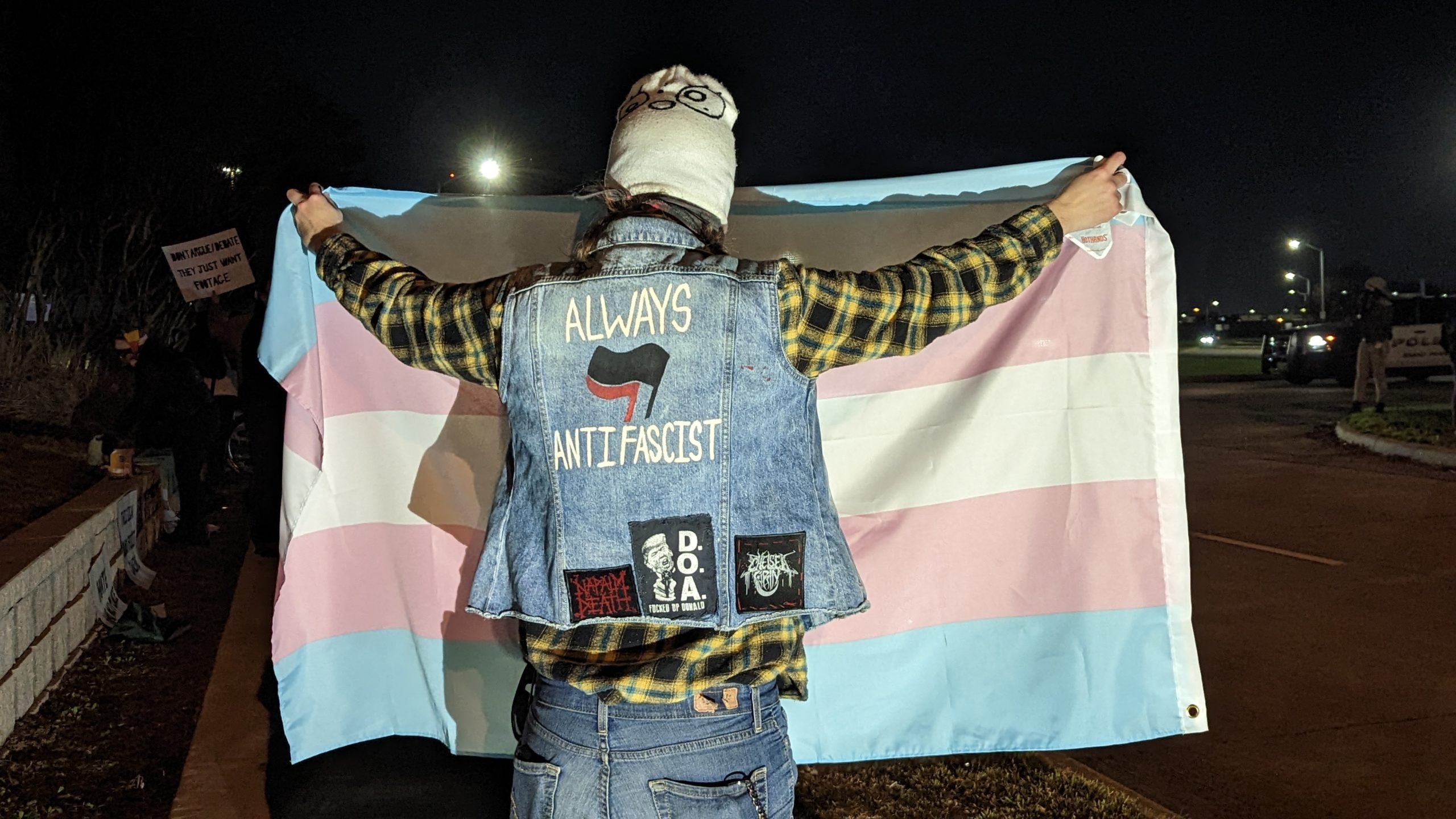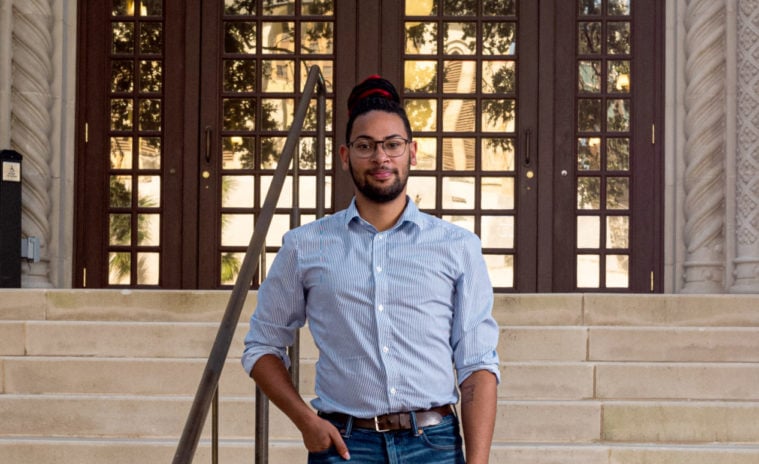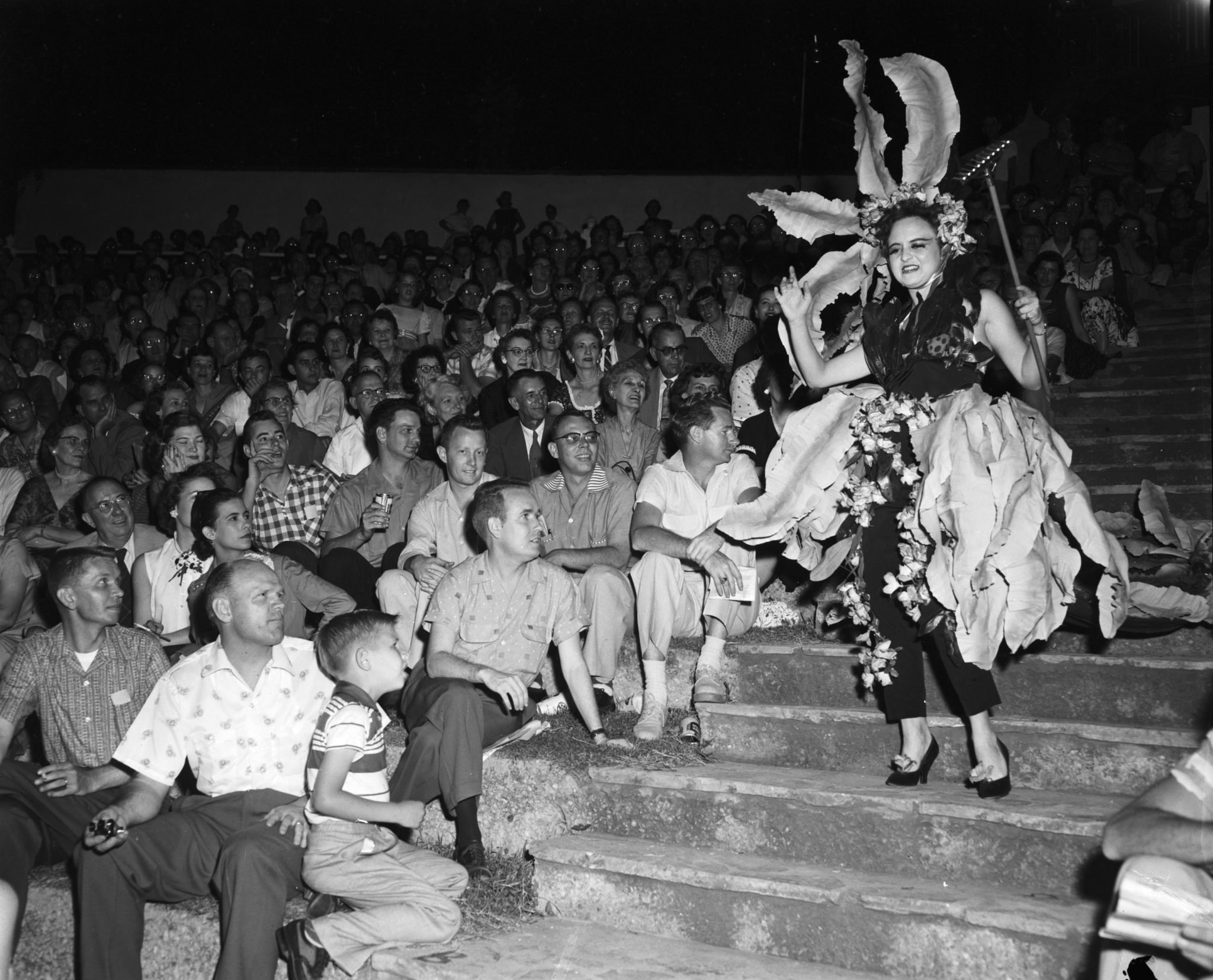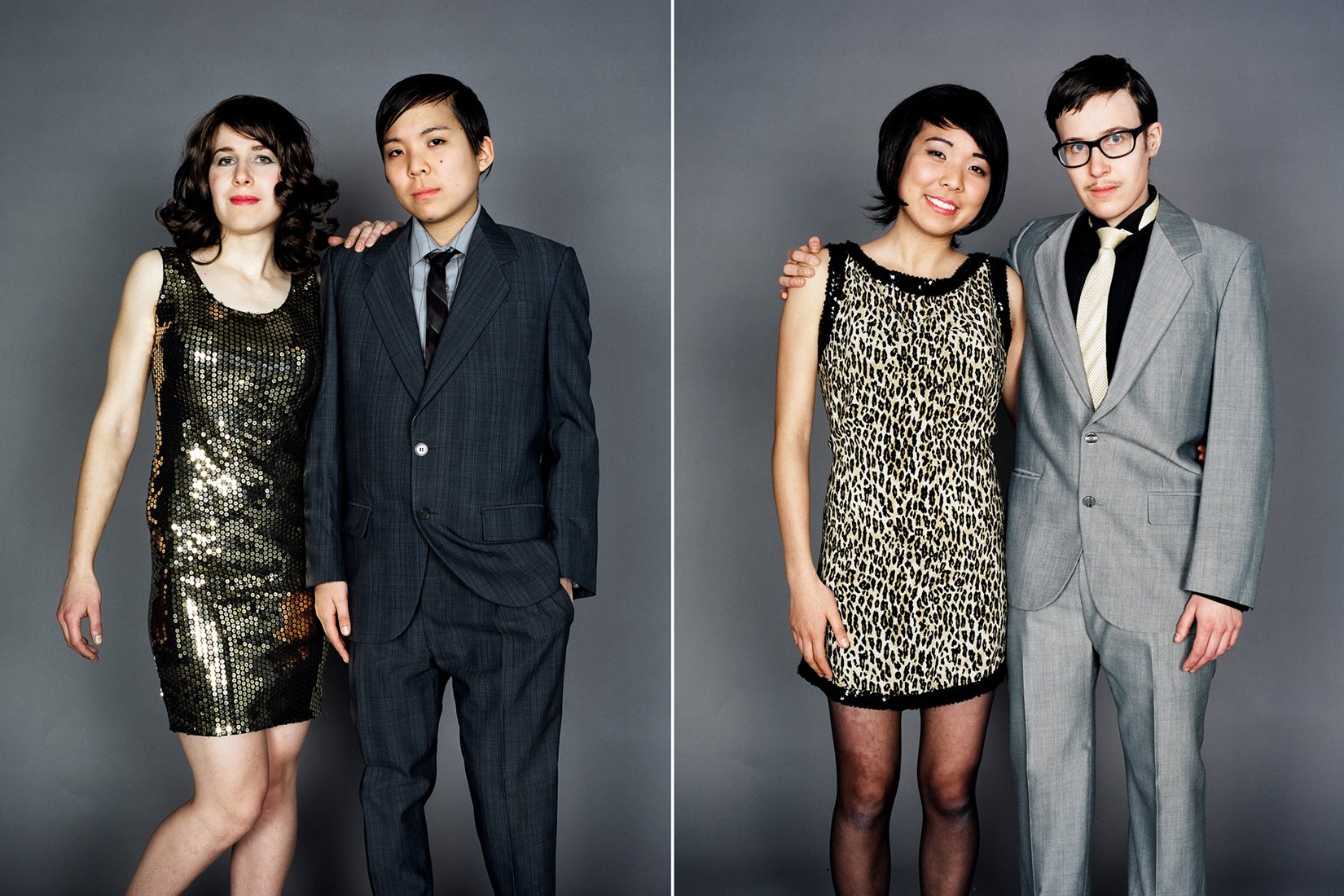
In San Antonio, a Landmark Art Exhibit Celebrates Gender Identity and Community
One of the United States’ first major exhibits focused on gender identity, Transamerica/n includes the work of more than 50 LGBTQ artists and allies.
Above: JJ Levine, "Switch 1," 2009. Digital photographs.
There’s a painting in Transamerica/n: Gender, Identity, Appearance Today that sums up the exhibit’s quietly subversive mood. Titled “Robert,” the acrylic work depicts a heavyset bearded man in a Morrissey T-shirt. With tattoos on his arm and a black cuff bracelet on his wrist, he appears stereotypically masculine. Then you notice that he’s wielding a pair of quilting shears, cutting fabric for a sewing project. Artist James Gobel, whose work focuses on bear culture, has adorned the painting with pieces of yarn, felt and thread. Why shouldn’t a big, masculine man partake in a traditionally feminine craft?
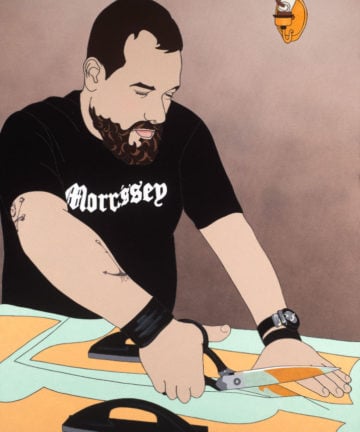
Transamerica/n bends gender norms in all sorts of directions. On display at the McNay Art Museum until September 15, the exhibit is billed as the country’s first major survey of North American art focused on gender identity. It’s presented in tandem with an exhibit of portraits by Andy Warhol and includes 100 pieces by more than 50 LGBTQ artists and allies, with a special emphasis on San Antonio’s Latino community.
Among the members of that community is Nicki Lucio, who contributed a self-portrait series to the show. Each painting portrays a different emotion, depicted in shades of gray. “A few years ago, I wouldn’t even look at a mirror,” Lucio said. “Whenever I worked on a self-portrait, it evoked a strong emotion, and it wasn’t a healthy way to be.” Lucio, who is openly trans, decided to confront her experiences with self-loathing by painting a self-portrait each day, treating it as on ongoing conversation with herself.
Rene Barrilleaux, the McNay’s head of curatorial affairs, emphasizes that the “trans” in the title refers not to just transgender art and artists, but to the broader idea of transgressing and crossing boundaries of all kinds: across gender norms, genre and media, class and culture. An eye-catching example of the latter is “El Arcoíris (The Rainbow)” by David Zamora Casas, an artist and activist in San Antonio. The artwork is presented as a giant altar, inspired by Mexico’s Dia de Los Muertos tradition. The altar holds portraits of Latino and Latina people across the gender spectrum alongside sugar skulls and other traditional items. Bright color-changing lights shine at the bottom of the altar, bringing the rainbow to life.
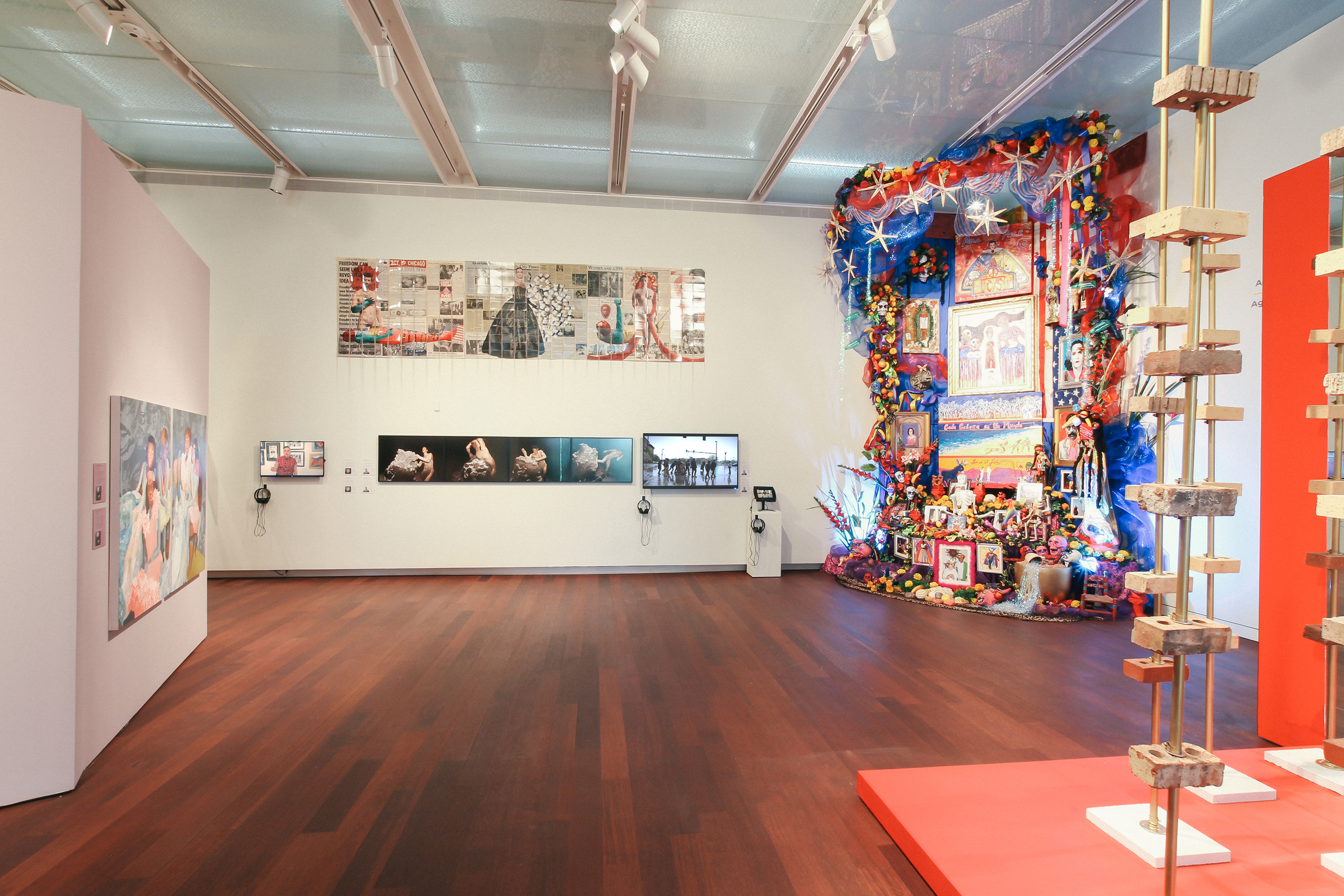
Another piece, “Doc in a Box,” was created based on artist Sarah Hill’s experiences at a doctor’s office. The 12-minute film uses puppets and humor to engage with the idea of medical trauma. It’s hard not to smile at the sight of the purple puppet, which sits on display at the exhibit, complete with large circular glasses, buck teeth and a neat yellow bow tie. This trans puppet is the focus of the film, attending a doctor’s appointment after a month of waiting and using its squeaky voice to ask about hormones, only to be misgendered and told that the doctor can’t prescribe testosterone.
“I try to use comedy to try to convey a message that’s harder to hear,” Hill said. “I think it makes it more palatable for people, not just hitting them over the head with the message.”
Transamerica/n could’ve easily been guilty of tokenism. Instead, the exhibit emphasizes a rich range of life experiences, cultures and artistic styles, encouraging viewers to ask questions and broaden their understanding. Lucio echoed this.
“I want people to understand we’re all humans,” Lucio said. “There’s more to my work than just what’s on the wall, but the person behind it. They have hopes and dreams just like everyone else.”
